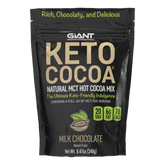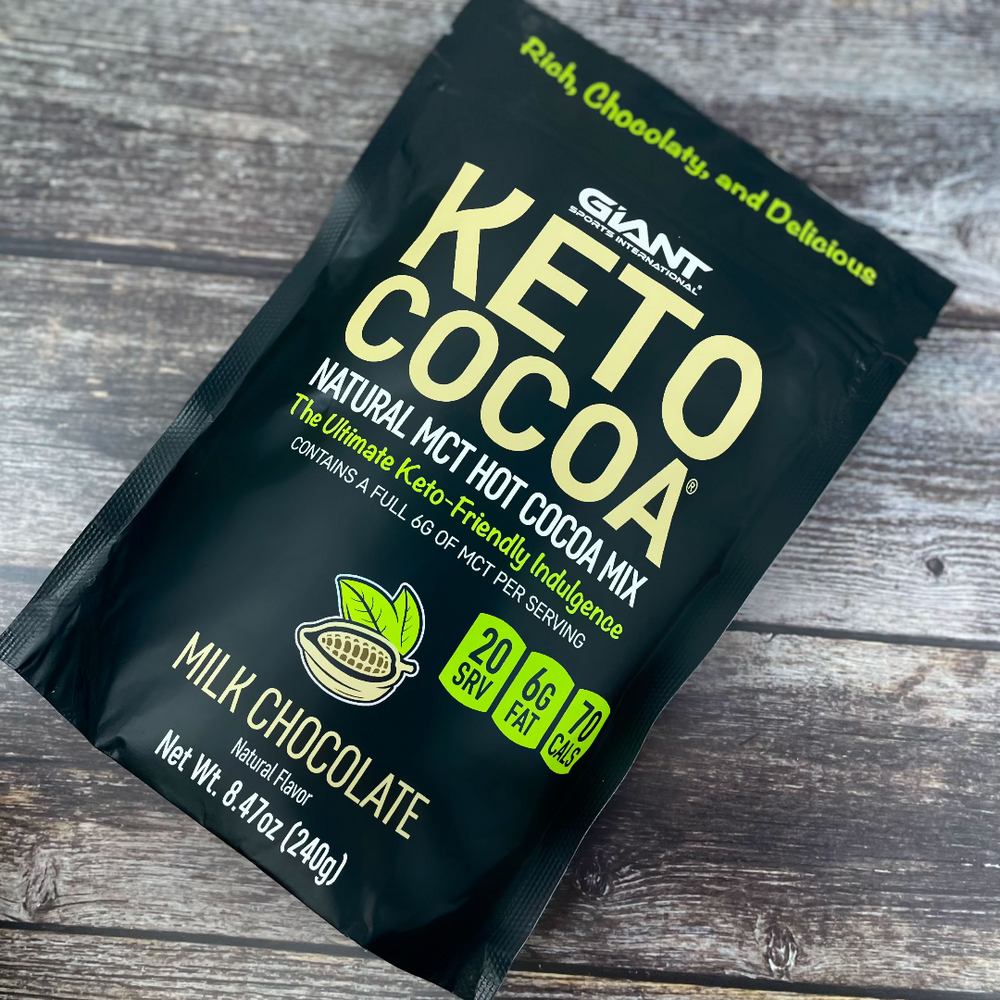
What You'll Learn
- Ketones and Ketosis
- How Long Does It Take to Enter Ketosis?
- How to Know When You Enter Ketosis
- How to Speed up Ketosis
- How to Stay in Ketosis: healthy Snacks
- Final Words
When people start the Keto Diet, they often wonder how long it takes to get into ketosis. This will vary from person to person, and it depends on other factors, including your carb intake, your metabolism, your exercise levels, and when you eat.
When you reduce your carb count down to between 20 and 50 grams per day, your body will transition from using glucose for its energy to producing and using ketones. The ketones are made in your liver and are stored in your fat. Your goal is to maintain your low carb intake to get your body into ketosis.
Ketones and Ketosis
Producing ketones and
entering ketosis is not necessarily the same thing. Whenever your body needs more energy and glucose or glycogen is not available, it begins to produce ketones. However, if you eat carbs after your body has produced the ketones, your body will continue to use carbs and convert them to glucose.
The way to transition to ketosis is to make sure that your body never has enough glucose to switch back to using it for its energy source. For this reason, entering ketosis is dependent on the sharp reduction of your carbohydrate intake.
Ketosis is a metabolic state where your body continues increasing the number of ketones it makes, and it runs off the ketones that are stored in fat. However initially, your body weight loss will come from a reduction of water weight. As your body becomes fat-adapted, your cells will start to use the ketones in your body fat.
When you are in ketosis, your energy is more stable. In addition, you have fewer cravings because ketosis lowers your ghrelin, which is the hunger hormone, and other chemical adaptations occur that make your body function more efficiently.
Ketones are efficient energy molecules that are synthesized when the body breaks fat down into fatty acids and glycerol. When you enter ketosis, your body will burn fat, literally.
How Long Does It Take to Enter Ketosis?
For most people who follow the keto diet, it will take somewhere between two and four days to enter ketosis. It can take longer for some people, but others can achieve it in a day. This depends on certain factors.
If you were accustomed to eating a high-carb diet, you may have more glycogen stored in your body. It will naturally take you longer to use up your resources, so it will take longer to enter ketosis.
If you are very active, you can enter ketosis faster than a person who is more sedentary. Your exercise uses energy, so you will use up your glycogen reserves more quickly.
If you have a slow metabolism, it can take more time to transition as well. It will take more time to metabolize the glucose and use it up.
Finally, you need to look out for hidden carbs in your food. Sometimes when people are new to the keto diet, they are eating some sneaky carbs that prevent them from entering ketosis.
How to Know When You Enter Ketosis
When you enter ketosis, you will have elevated ketones in your urine, your breath, and your blood. The best way to find out if you have entered ketosis is by using one or more of the following to test your ketone levels.
- Blood Test: Blood tests are considered to be the most reliable method for measuring your ketones. You can go to a lab to have the test done, or you can buy a test kit that you can use at home. The blood test will measure BHB (beta-hydroxybutyrate) in your blood. If it measures higher than 0.3 mmol/L, it is considered to be elevated. However, you want to see it above 1 mmol/L to know that you are in ketosis.
- Breath Test: The breath test measures a different ketone called acetone. This ketone actually causes bad breath. The test is less reliable, but it can give you a sense of whether you are in ketosis.
- Urine Test: The urine test is done with a strip that you place in the line of your urine. It is the easiest way to test, although it is less reliable. However, you can look at the color of the strip, and there will be a label that tells you what color indicates that you are in ketosis.
How to Speed up Ketosis
If you want to get into ketosis sooner, you can take steps to help your body along. Take a look at the following tips:
1. Restrict Your Carbs: Start by restricting your carbs. This will keep your blood sugar levels lower, your insulin levels lower, and it will signal your body cells to burn fat and make the ketones for your energy.
2. Increase Your Consumption of Healthy Fats: When you reduce your carbs, you need to replace it with healthy fats. This will help to reduce your appetite and increase your ketone production. Stick with healthy fats such as avocados, butter, heavy cream, Greek yogurt, fatty fish, and nut butter. They will help build your cell membranes, absorb fat-soluble vitamins such as Vitamin A, D, and K, and produce more ketones. In addition, your body will produce fewer hunger hormones, so you will have fewer cravings.
3. Try Intermittent Fasting: Intermittent fasting is where you fast for a period of time, and you eat during a specific period of time. When you fast, your body uses fatty acids for its energy. If you use intermittent fasting, it will help you enter ketosis more quickly.
When you do this, you simply choose an amount of time to stay away from food. You might choose not to eat for 12 hours overnight, or you might choose to fast for 24 hours. This will help your body to enter ketosis more quickly.
4. Add MCT Oil to Your Diet: MCT Oil is Medium Chain triglyceride oil. It is a great helper for people who want to get into ketosis. It doesn’t have any flavor, and when you consume it, it goes to your liver, where it is converted into ketone bodies. This will help you increase the amount of ketones you produce.
5. Can Exogenous Ketones Help? Exogenous ketones are those made outside of your body. They are synthetic, and you can supplement your diet with them. Most of the time, they are BHB. The reason to take them is to increase your ketone levels and reduce your glucose levels.
Taking these exogenous ketones
can help to speed up your body’s transition into ketosis.
How to Stay in Ketosis: healthy Snacks
Once your body is in ketosis, you want it to stay there. You should carefully plan your menu for the week, including your snacks. It is important that you get enough nutrition. There are many different keto-friendly snacks that you can keep with you to ward off hunger between meals. Take a look at some of these options:
-
Mini Egg Muffins: If you have a mini muffin pan, you can bake these delicious snacks. Take a dozen eggs, and beat them in a bowl. You can season them with a little salt and pepper. You can add keto-friendly ingredients such as cheese, tomatoes, spinach, or mushrooms. Bake them for 15 to 20 minutes at 350 degrees, and you have 12 delicious snacks. Each mini egg muffin will give you protein and fat without the carbs.
-
Caprese Salad: Another keto snack favorite is a Caprese salad on skewers. Take tomatoes and mozzarella cheese, basil leaves and some olive oil and balsamic vinegar. You can arrange them on skewers for the perfect keto snack.
-
Fat Bombs: Fat bombs are low carb energy balls that will satisfy your sweet cravings. You can use a number of different recipes, and ingredients may include coconut oil, nut butter, avocado, cream cheese, and dark chocolate. Choose your favorite combination, or try one of these recipes.
-
Meatball Sliders: You can make little meatball sliders on lettuce as a wonderful keto snack. You can add cheese, eggs, garlic, and herbs, and shape them into little balls. Freeze a batch so that you always have this delicious keto snack when you need it.
Final Words
Although everyone’s body works a little bit differently, most people will achieve the metabolic state of ketosis in two to four days. Some people may get there sooner, while others may take longer. It will depend on your diet prior to keto and how much glycogen is stored in your body.
Your body will begin producing ketones as soon as you reduce your carb intake below 50 grams per day, but it will take some time before the ketone levels are high enough to be in ketosis. Supplementing your diet with exogenous ketones and exercise will both help you to get there more quickly. You can also add MCT Oil to your diet, and make sure that you have plenty of delicious keto friendly snacks on hand. When you reach ketosis, you will find that you have more energy, you can lose weight, and you will have more control of your appetite as long as you substitute healthy fats for the carbs.









